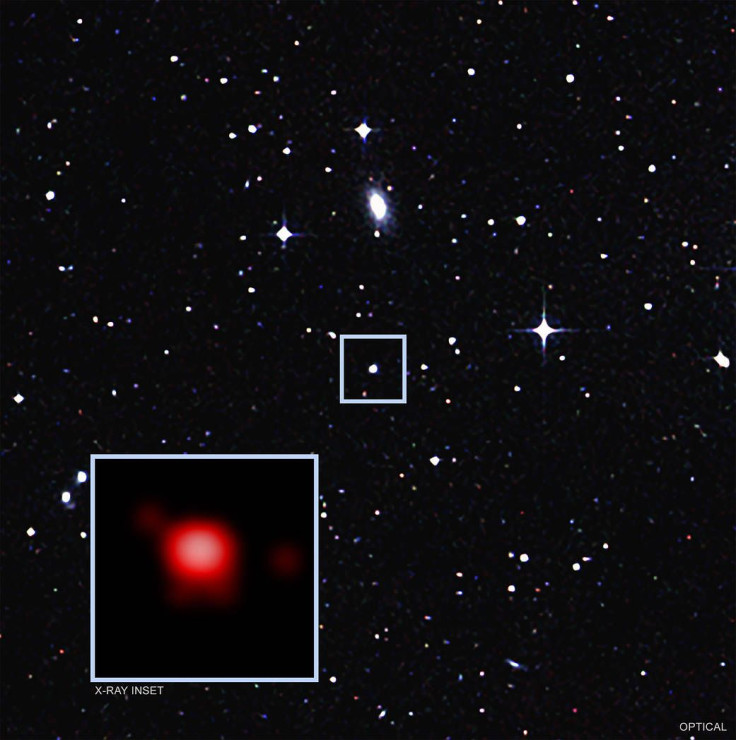NASA Discovers Rare Supermassive Black Hole That Eats Three Meals A Day

For the first time, scientists from NASA and the European Space Agency (ESA) witnessed a supermassive black hole consuming large amounts of material on a regular basis. According to the agencies, the black hole consumes about four Moons’ worth of material multiple times a day.
The discovery was made through NASA’s Chandra X-ray Observatory and the ESA’s XMM-Newton. Using the data collected by these two space observatories, the agencies were able to pinpoint the source of repeating X-ray bursts.
According to the agencies, the bursts occurred every nine hours and originated from the center of a distant galaxy known as GSN 069, which is located about 250 million light-years from Earth.
Upon further investigation into the galaxy, the agencies’ astronomers came across a supermassive black hole sitting at the center of GSN 069. According to the astronomers, the black hole has about 400,000 times the mass of the Sun.
Aside from its size, another impressive aspect is its regular diet routine. The astronomers noted that the supermassive black hole consumes billions of pounds of cosmic material per feeding, which occurs about three times a day. They estimated that the amount of material it eats per feeding is equivalent to four Moons.
“This black hole is on a meal plan like we’ve never seen before.” 🥘 Consuming ~4 Moons’ worth of material ~3X a day, a supermassive black hole light years away is giving scientist a unique chance to study the behavior of these mysterious objects. See how: https://t.co/Q1zT3ueaGD pic.twitter.com/CCyX1ozRXd
— NASA (@NASA) September 11, 2019
The astronomers said this was the first time this type of behavior was observed in supermassive black holes.
“This black hole is on a meal plan like we’ve never seen before,” Giovanni Miniutti from the ESA’s Center for Astrobiology in Spain said in a statement. “This behavior is so unprecedented that we had to coin a new expression to describe it: X-ray Quasi-Periodic Eruptions.”
According to the astronomers, the bursts of X-ray emissions they first detected could have come from a star that the black hole has devoured. However, they noted that further investigations are yet to be conducted in order to understand why the bursts were repeating at a regular schedule.
“We think the origin of the X-ray emission is a star that the black hole has partially or completely torn apart and is slowly consuming bit by bit,” Margherita Giustini of the ESA’s Center for Astrobiology explained.
“But as for the repeating bursts, this is a completely different story whose origin needs to be studied with further data and new theoretical models,” she added.
© Copyright IBTimes 2024. All rights reserved.





















